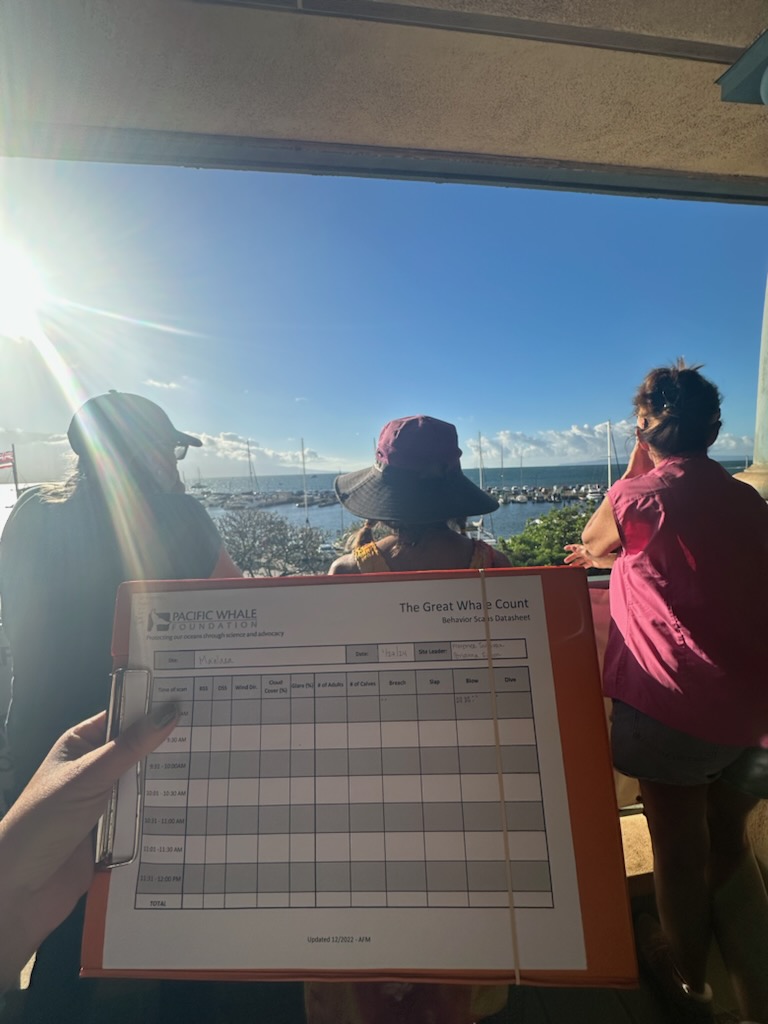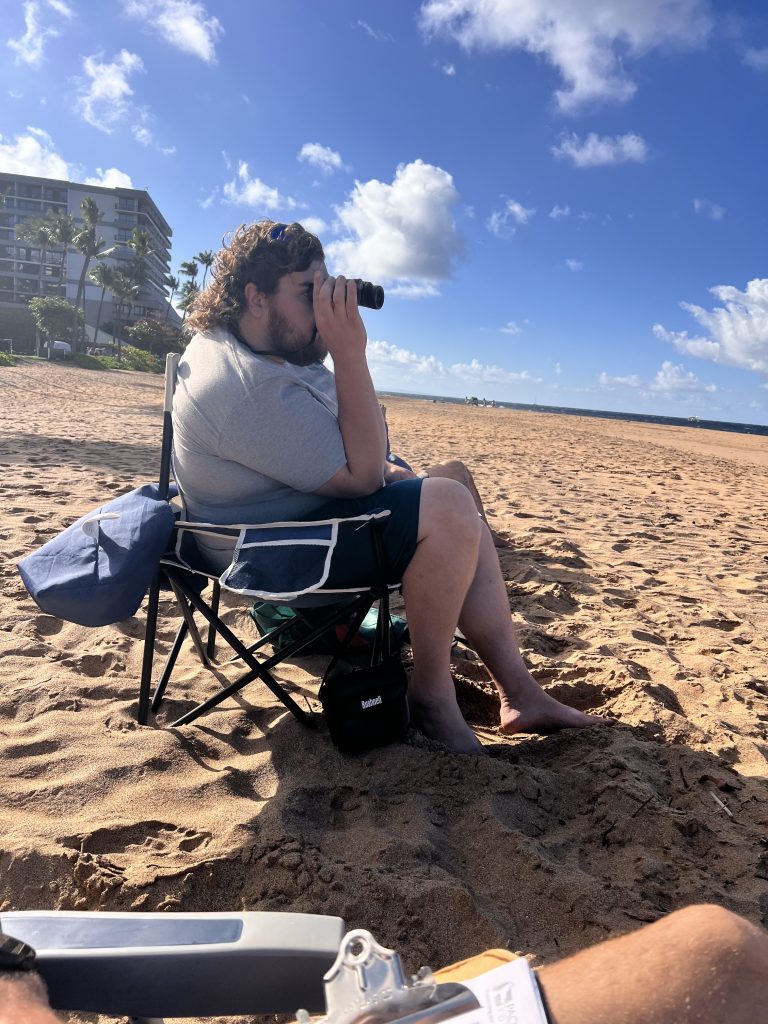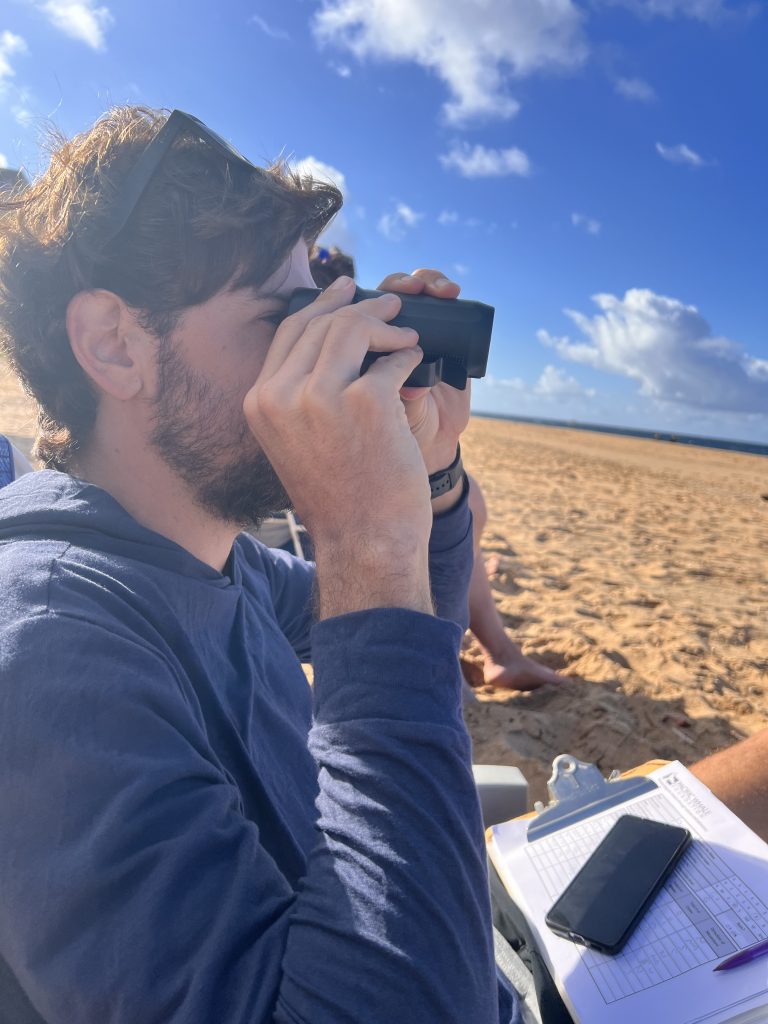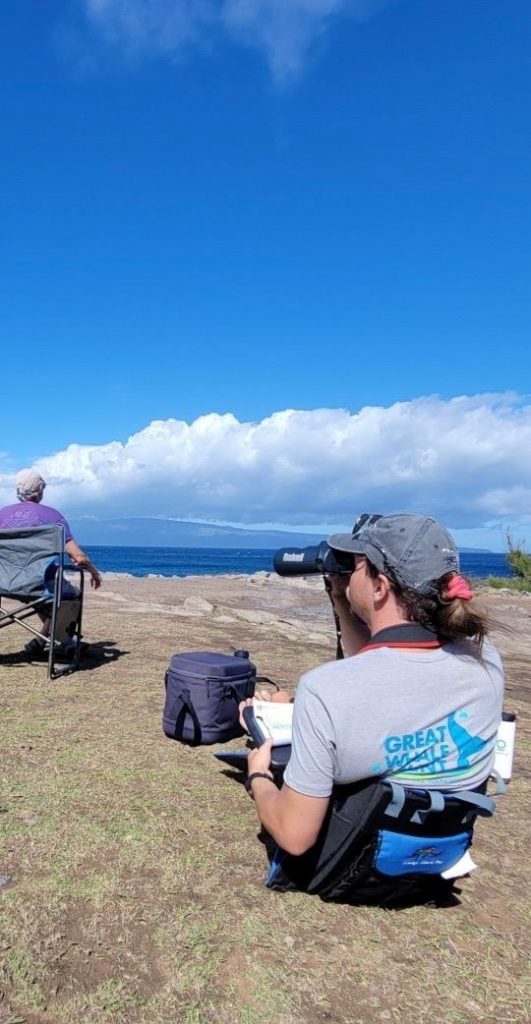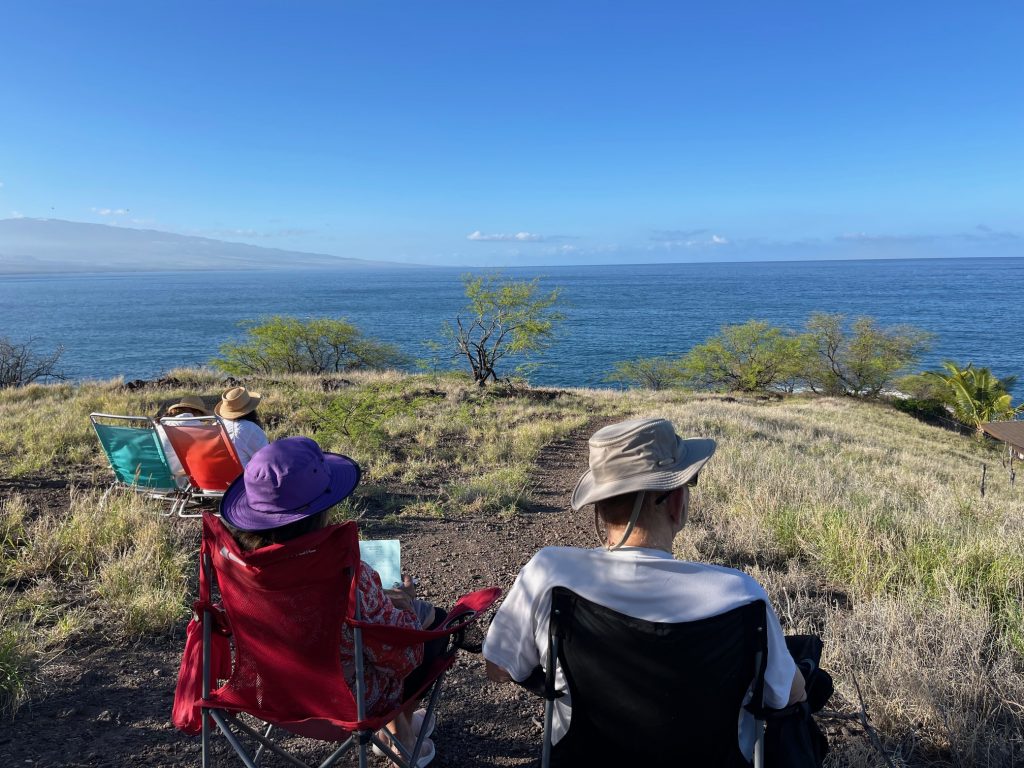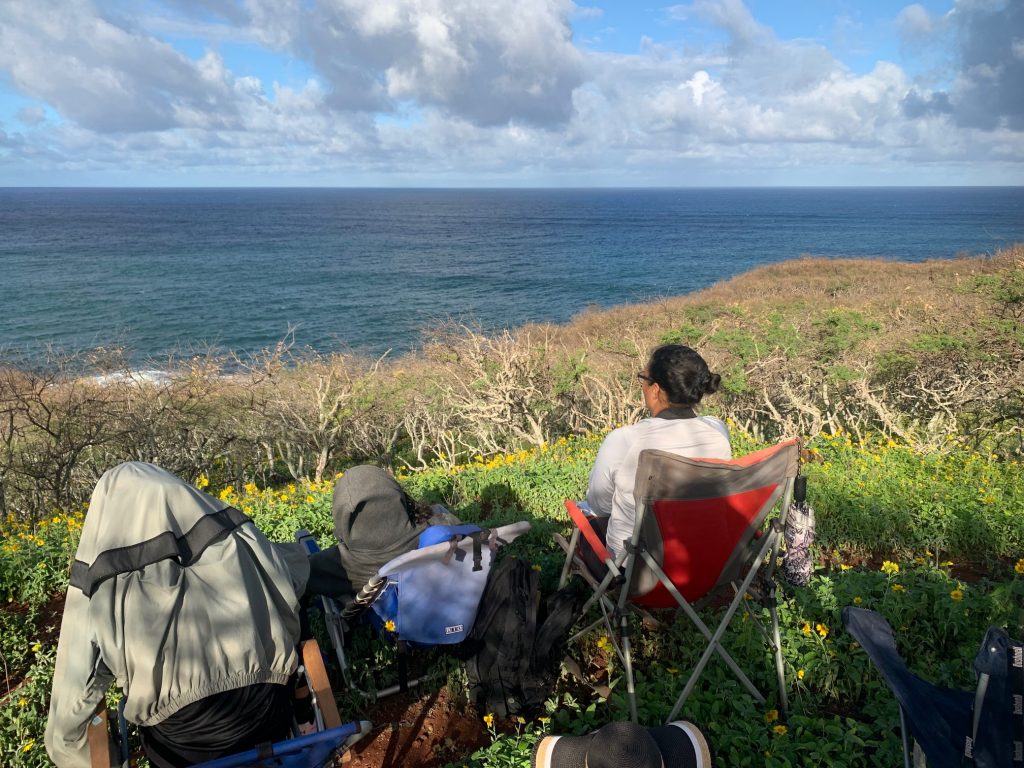2,124 whales observed during first Sanctuary Ocean Count and Great Whale Count of 2024
A total of 2,124 whales were observed throughout the state during the Great Whale Count and Ocean Count held Saturday, Jan. 27. Organizers say this number may represent duplicate sightings of the same whale by different observers or at different time periods or different locations throughout the day.
On Maui, there were 821 whales spotted, the most of any location around the state, followed by Oʻahu (604), Hawaiʻi Island (324), Kauaʻi (292), Lānaʻi (53) and Molokaʻi (30).
More than 400 volunteers gathered data from the shores of Molokaʻi, Kaua‘i, O‘ahu, and Hawai‘i island during the Hawaiian Islands Humpback Whale National Marine Sanctuary Ocean Count and from Maui and Lānaʻi during the Great Whale Count by Pacific Whale Foundation, the first of three coordinated whale counts between the two organizations in 2024. Additional counts take place on the last Saturday in February and March.
This is the sixth year that both counts are coordinated on the same days, ensuring the data from all the main Hawaiian Islands are collected simultaneously.
Organizers say data collected during the counts, combined with other research efforts, can help reveal trends in humpback whale occurrence within and amongst whale seasons.
Volunteers collected data from 44 sites across all the main Hawaiian Islands. A total of 315 whales were observed during the 9 – 9:15 a.m. time period, the most of any time period throughout the day’s count.
- On Maui and Lānaʻi, Great Whale Count volunteers collected data from 12 sites during 15-minute intervals between 8:30 a.m. and 11:50 a.m. A total of 141 whales were observed during the 9- 9:15 a.m. time period, the most of any time period throughout the day’s count.
- On the islands of Kaua‘i, Oʻahu, Molokaʻi and Hawaiʻi, Ocean Count volunteers collected data from 32 sites; a total of 174 whales were observed during the 9 – 9:15 a.m. time period, the most of any time period throughout the day’s count.
Across the main Hawaiian Islands, weather conditions were primarily mostly sunny with winds varying from light to moderate throughout the day. Several sites did experience rain and gusty winds which was not ideal for observing whales.
A variety of other species were also spotted during the count including honu (green sea turtles), ʻilioholoikauaua (Hawaiian monk seals), naiʻa (spinner dolphins), mālolo (Hawaiian flying fish) and multiple bird species such as aeʻo (Hawaiian stilts), ʻiwa (great frigatebird), mōlī (Laysan albatross), kōlea (Pacific golden plover), nēnē (Hawaiian goose) and more.

Ocean Count promotes public awareness about humpback whales, Hawaiian Islands Humpback Whale National Marine Sanctuary, and shore-based whale watching opportunities. Site leaders tally humpback whale sightings and document the animals’ surface behavior during the survey, which provides a snapshot of humpback whales’ activity from the shorelines of Kaua‘i, Oʻahu, Molokaʻi and Hawai‘i islands. Ocean Count is supported by the National Marine Sanctuary Foundation.
The Great Whale Count by Pacific Whale Foundation had site leaders count whales from shore as part of a long-term survey of humpback whales in Hawai’i, with 12 survey sites along the shoreline of Maui and a new site on the shoreline of Lānaʻi. This event provides a snapshot of trends in relative abundance of whales and is one of the world’s longest-running community science projects.
- Preliminary data detailing Sanctuary Ocean Count whale sightings by site location are available at: https://oceancount.org/resources/. Additional information is available on the sanctuary’s website at http://hawaiihumpbackwhale.noaa.gov.
- Pacific Whale Foundation’s Great Whale Count data may be found at https://www.pacificwhale.org/research/community-science/ with additional information at www.mauiwhalefestival.org
Hawaiian Islands Humpback Whale National Marine Sanctuary, administered by NOAA’s Office of National Marine Sanctuaries and the State of Hawai‘i Division of Aquatic Resources, protects humpback whales and their habitat in Hawaiian waters where they migrate each winter to mate, calve, and nurse their young.
With a mission to protect the ocean through science and advocacy, and to inspire environmental stewardship, Pacific Whale Foundation conducts Research, Education and Conservation programs for the communities in which it serves.
The National Marine Sanctuary Foundation, established in 2000, is the official nonprofit partner of the National Marine Sanctuary System. The Foundation directly supports national marine sanctuaries by protecting species, conserving ecosystems and preserving America’s maritime heritage through on-the-water conservation projects, public education and outreach programs and scientific research and exploration.





